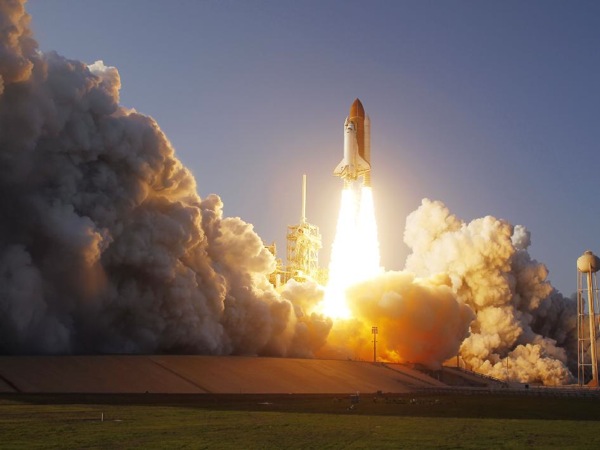 Space shuttle Discovery at its final launch, looking awesome and polluting like crazyPhoto: NASA
Space shuttle Discovery at its final launch, looking awesome and polluting like crazyPhoto: NASA
Yesterday’s final launch of the space shuttle Discovery provided some amazing images, and probably made a few of us look wistfully at the sky and think of space panoramas (or in my case space poop and space laundry, because I just read Packing for Mars). But even though astronauts report that gazing down at Earth makes them feel more tender and caring about their fragile planet, it’s probably best for everyone if the rest of us remain on the ground.
Even if space tourism becomes affordable (it currently costs $200,000, which you might as well spend on an electric Rolls), some scientists say that frequent space jaunts could spell disaster for the climate and the atmosphere:
Martin Ross, one of the authors of the paper, said that simulations predicted that over 1,000 space flights a year could increase polar surface temperatures by 1 °C, and reduce polar sea ice by 5-15%. “There are fundamental limits to how much material human beings can put into orbit without having a significant impact,” Ross said, who is also an atmospheric scientist at the Aerospace Corporation in Los Angeles, California.
Currently, commercial rockets burn a mixture of kerosene and liquid oxygen that release large amounts of carbon. Several companies are attempting to change this however by developing a more economical ‘hybrid’ rocket engine that ignites synthetic hydrocarbon with nitrous oxide. However the authors of the paper say that these new hybrid engines emit even more black carbon than a kerosene and oxygen engine.
Oh well, another dream shattered.




